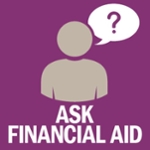Student Loans
Tri-C is committed to promoting student success through responsible student loan borrowing. Student loans are borrowed money that has to be repaid, with interest, to the U.S. Department of Education. The William D. Ford Federal Direct Loan is a low-interest loan for students to help pay for the cost of college education. Moderate student loan borrowing demonstrates financial responsibility and ensures students incur limited debt to finance their education.
Important Announcements
- The student loan debt relief regulations proposed by the Biden-Harris Administration have been withdrawn. Learn about other types of student loan forgiveness you may be eligible for.
- If you’re a student or a federal student loan borrower who has been impacted by a federally declared natural disaster (such as a wildfire, hurricane, flood, or tornado), please review Natural Disasters: Information for Affected Individuals for helpful information. You can also contact the Financial Aid Office if you have been impacted.

